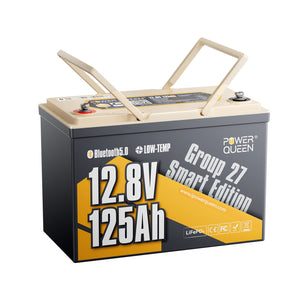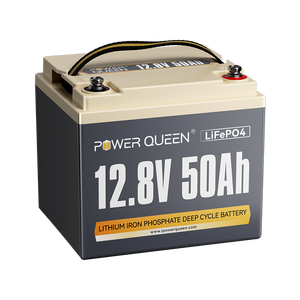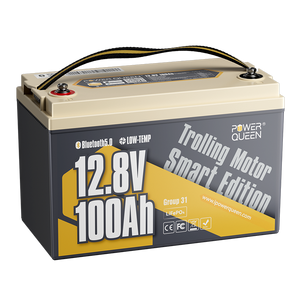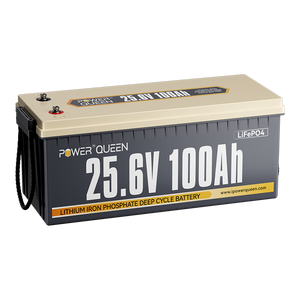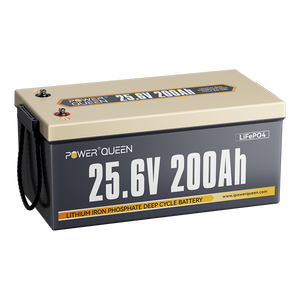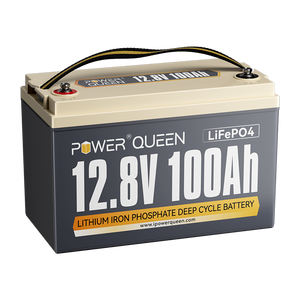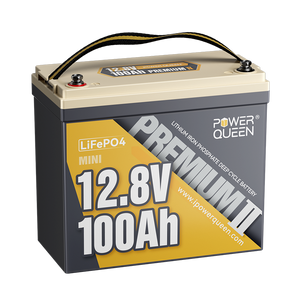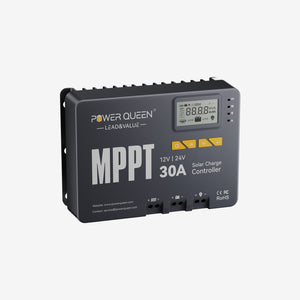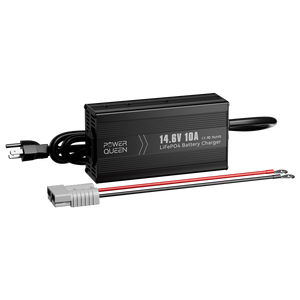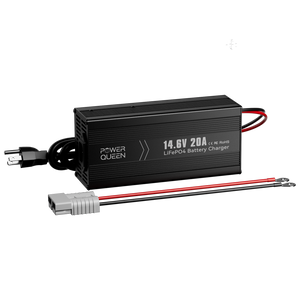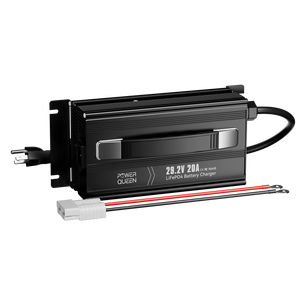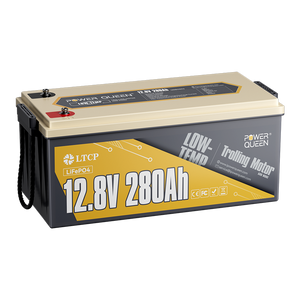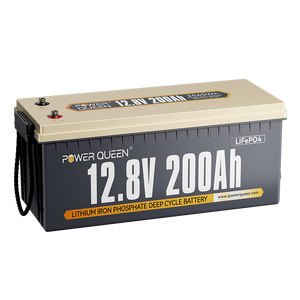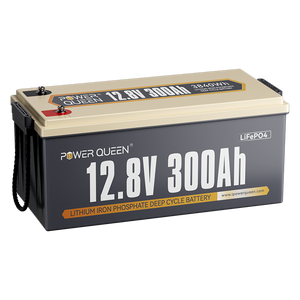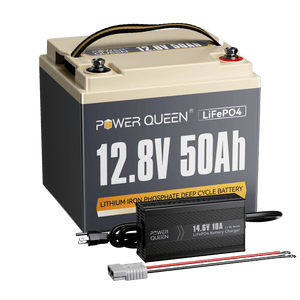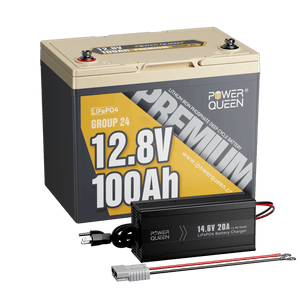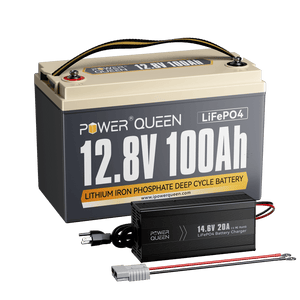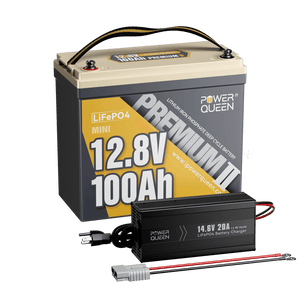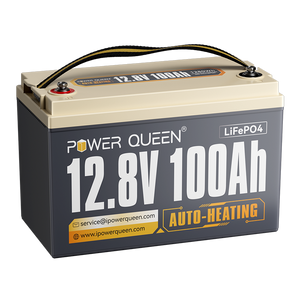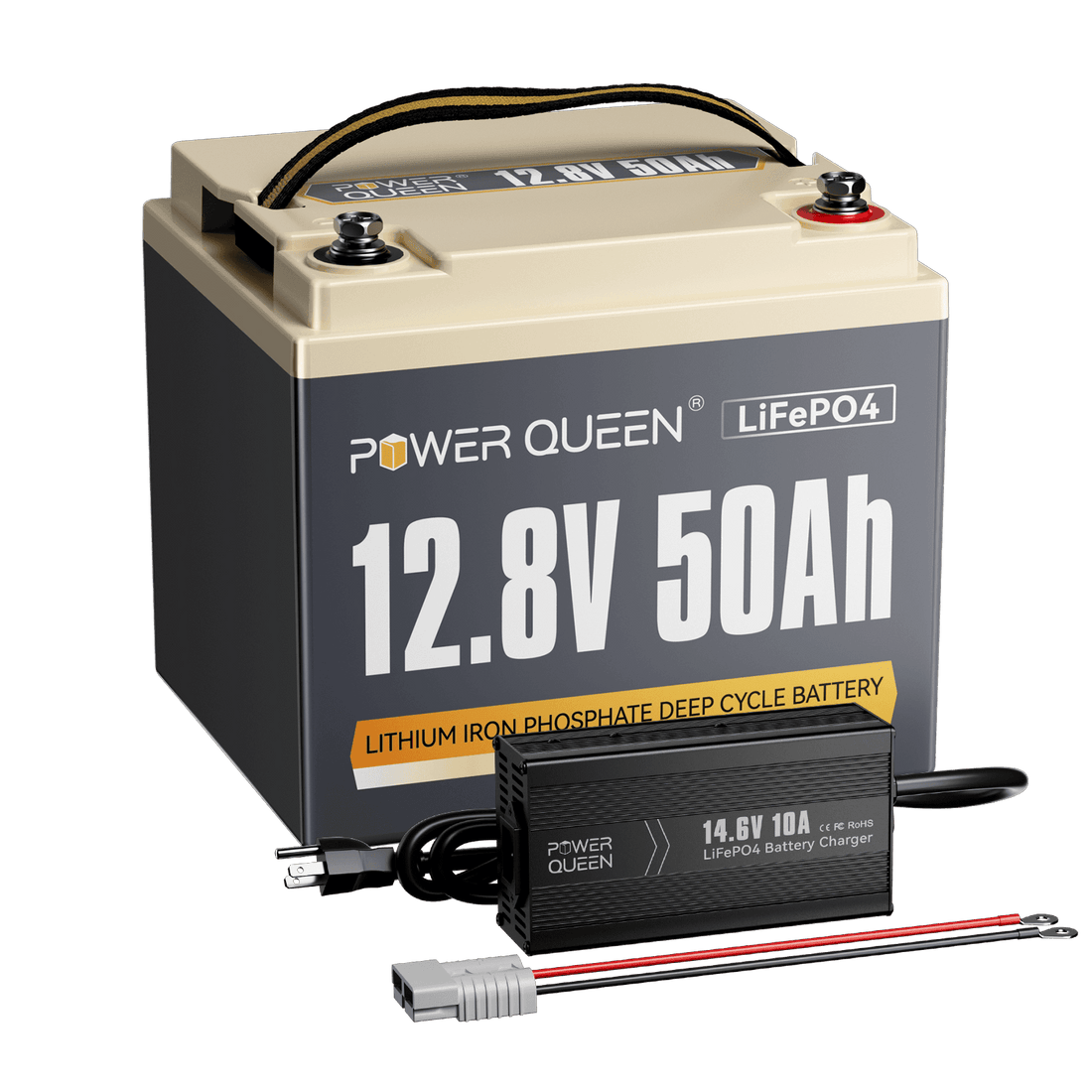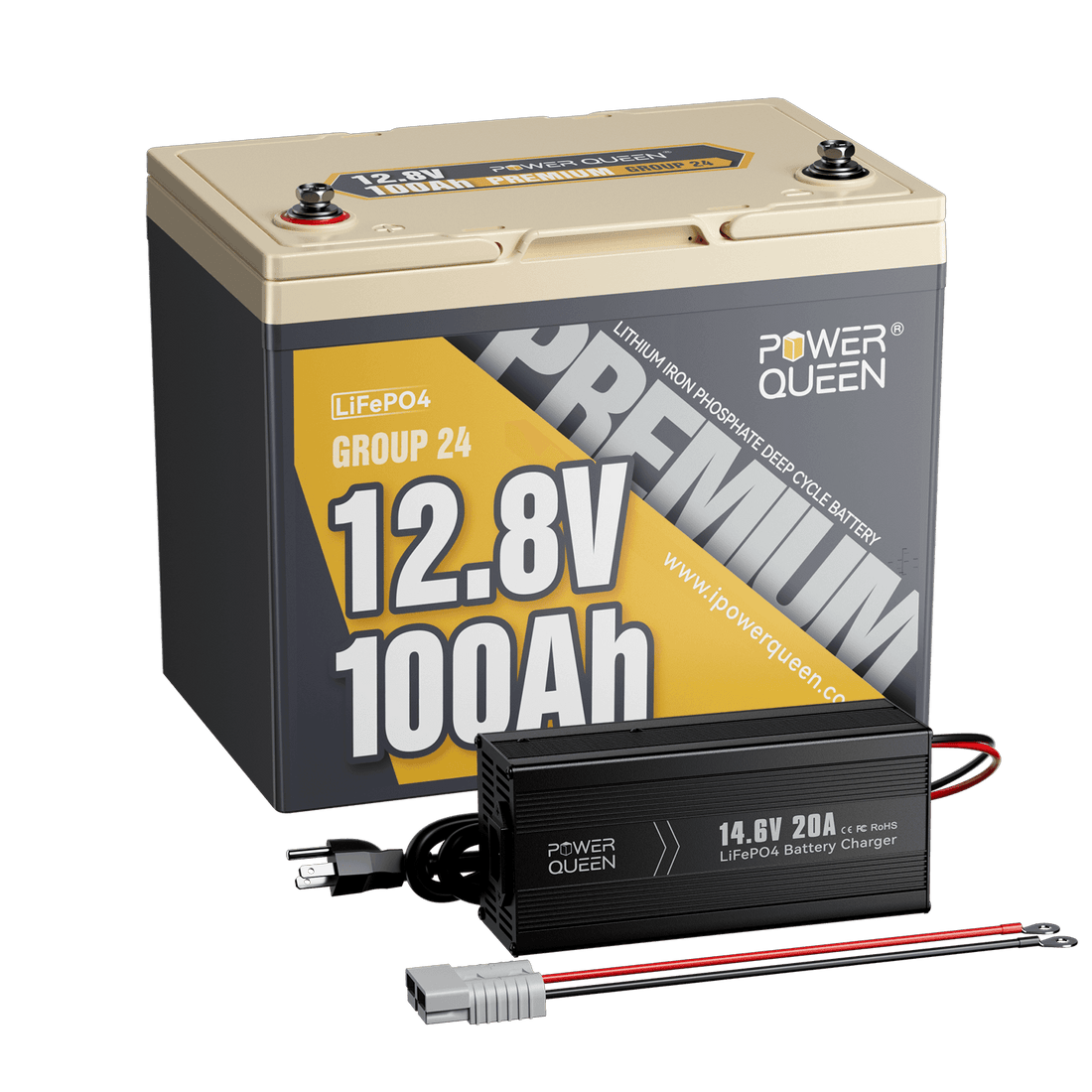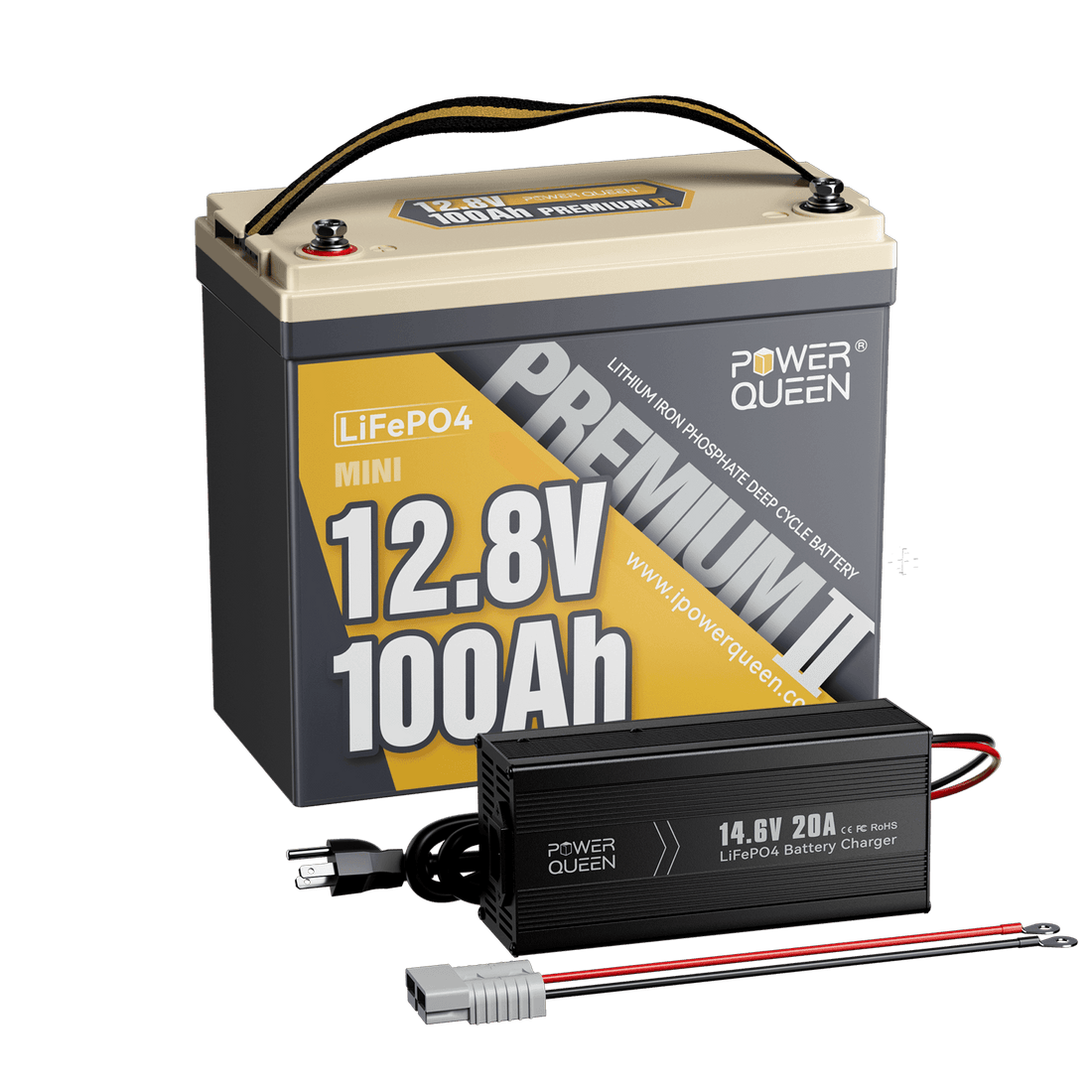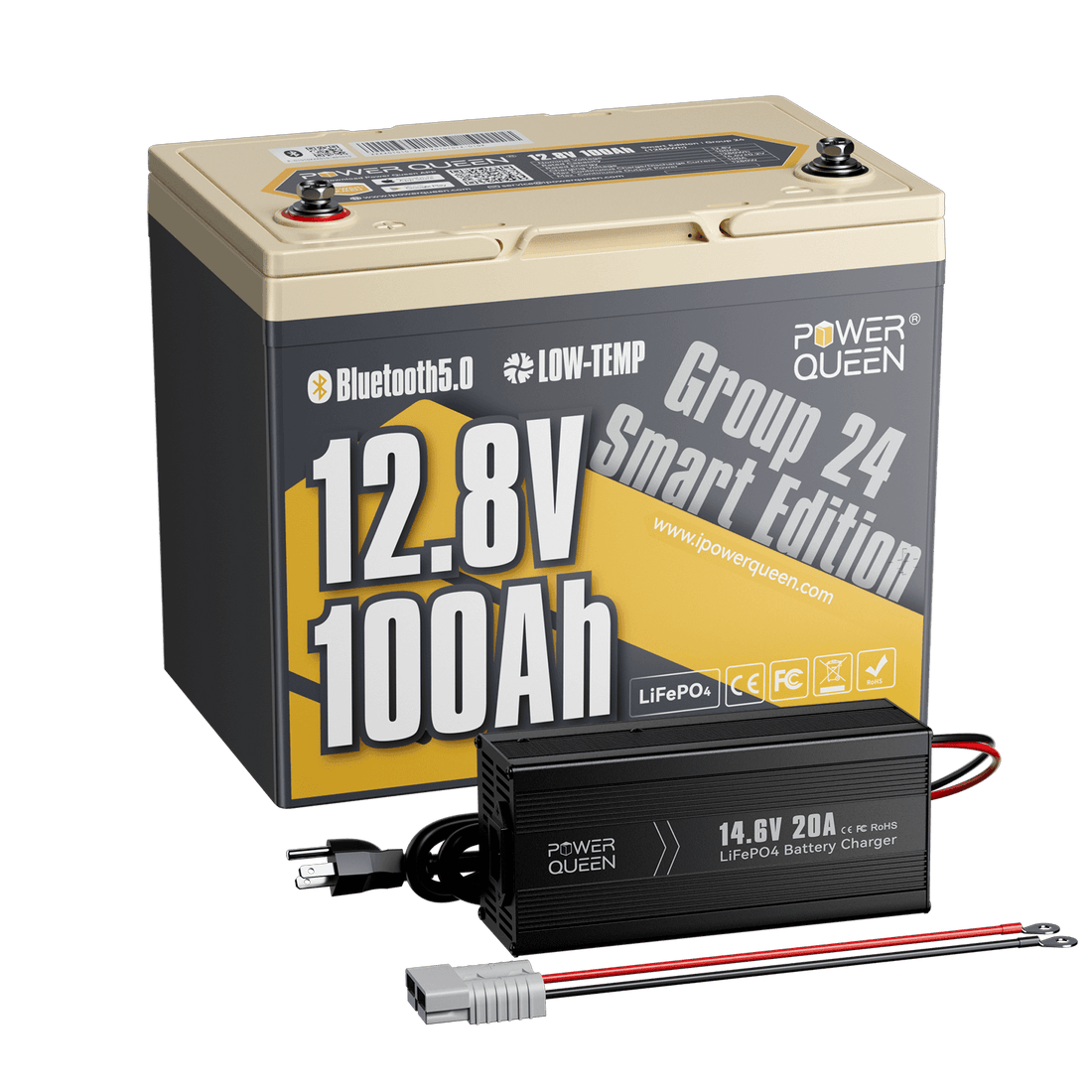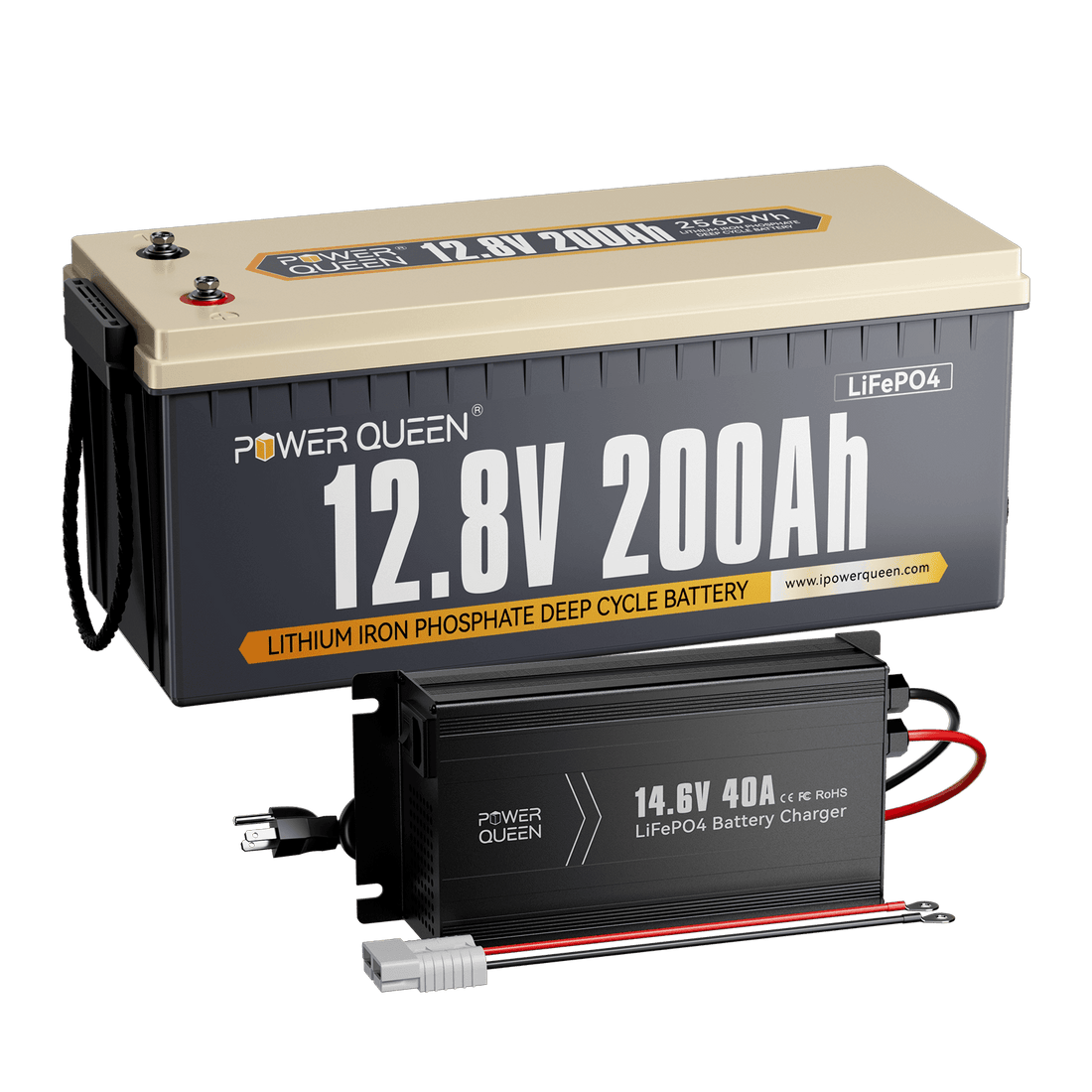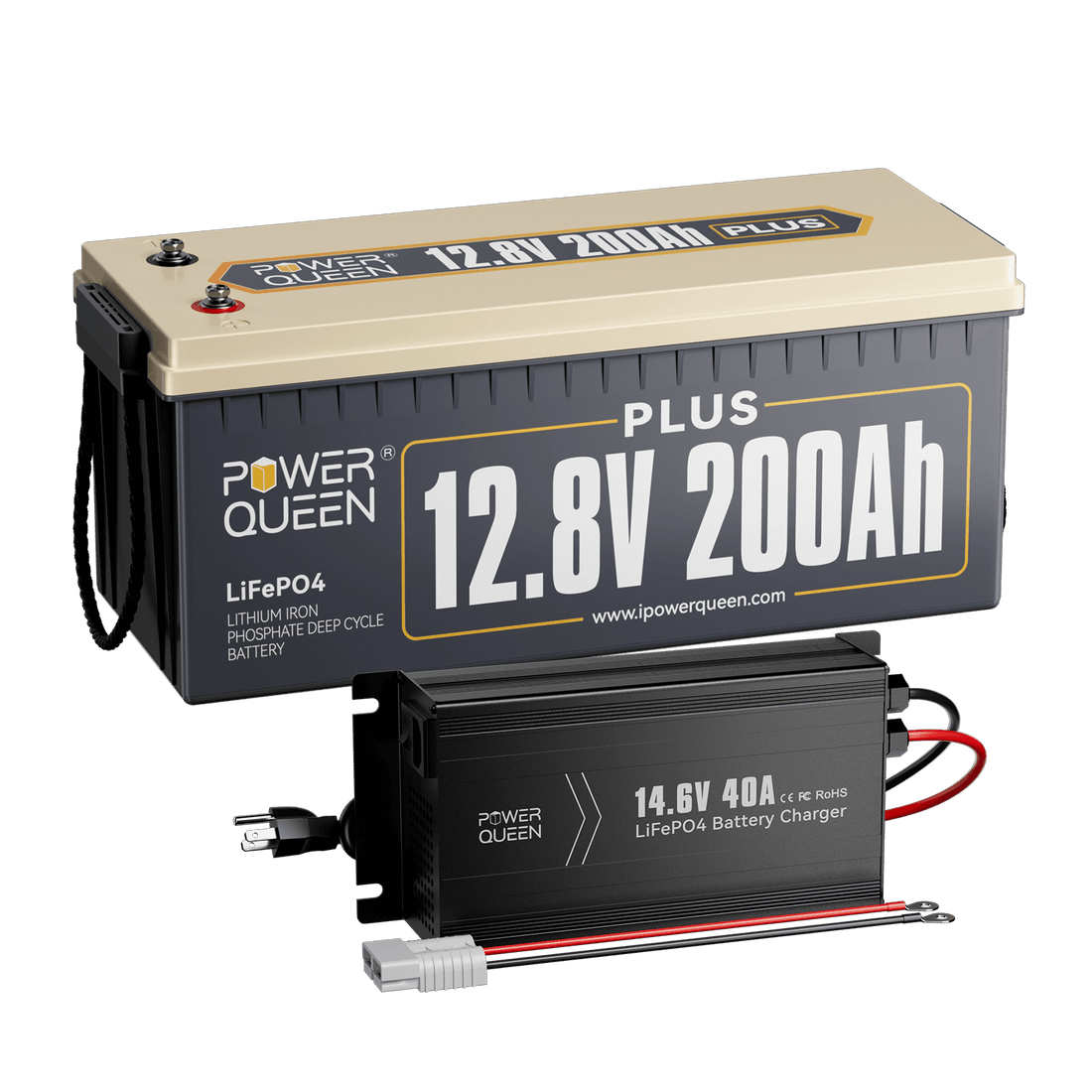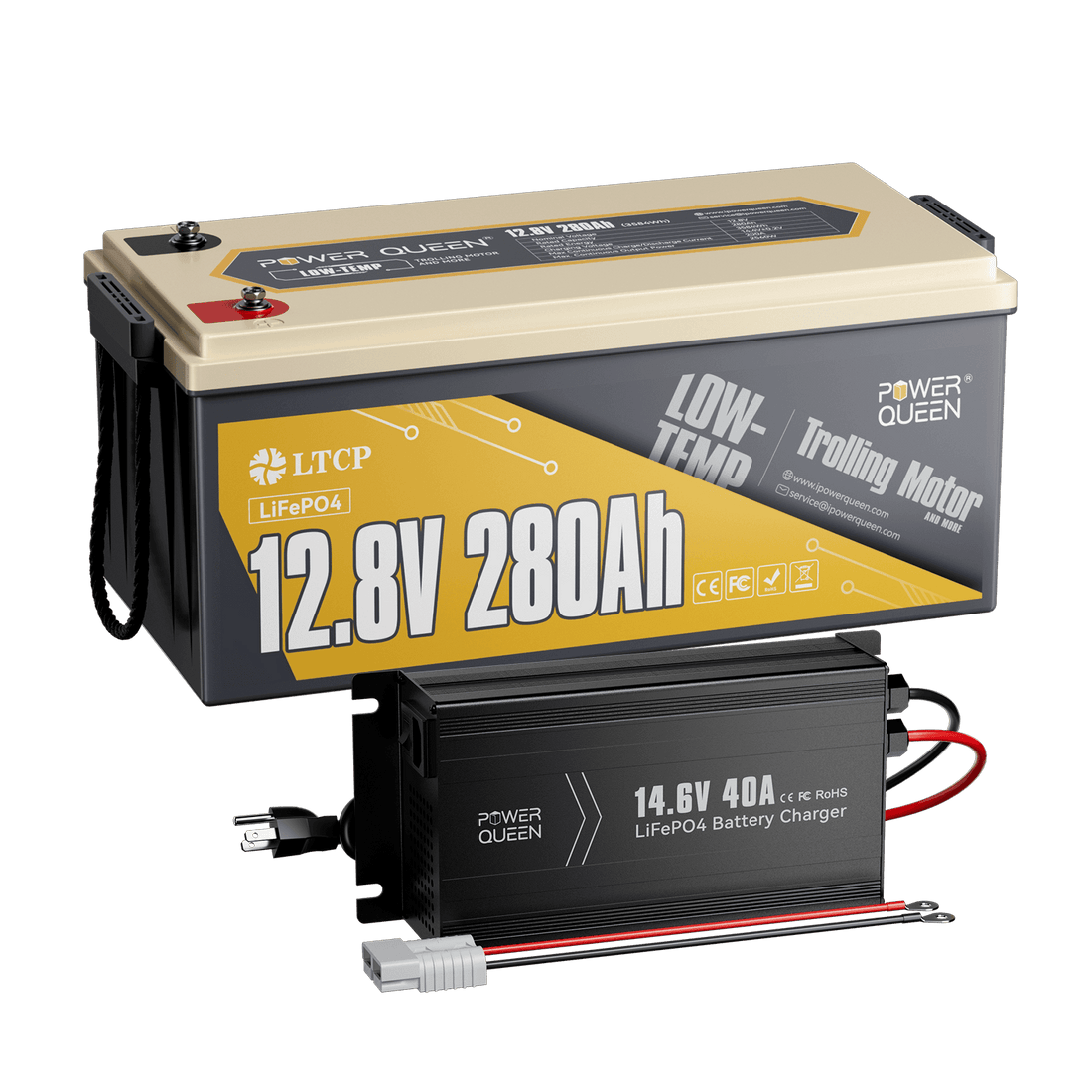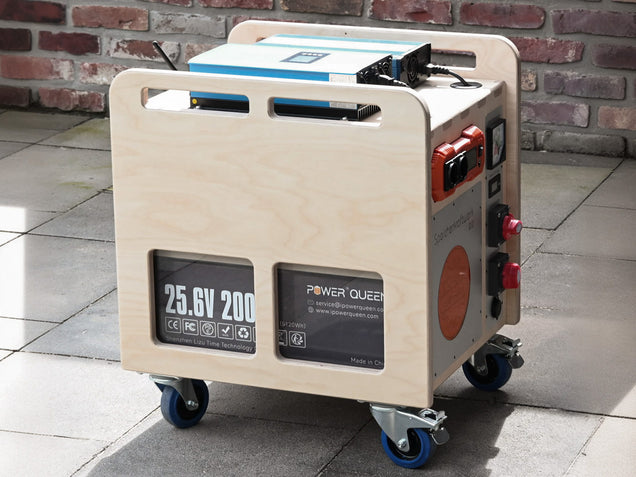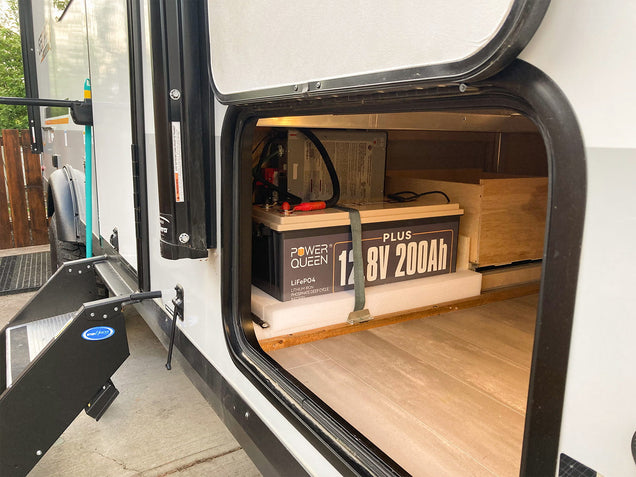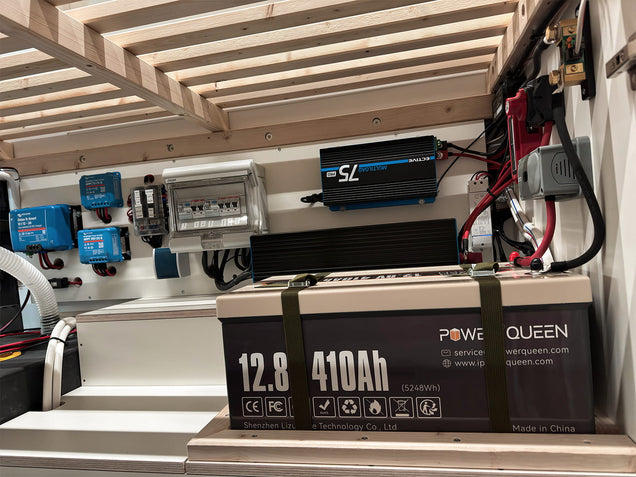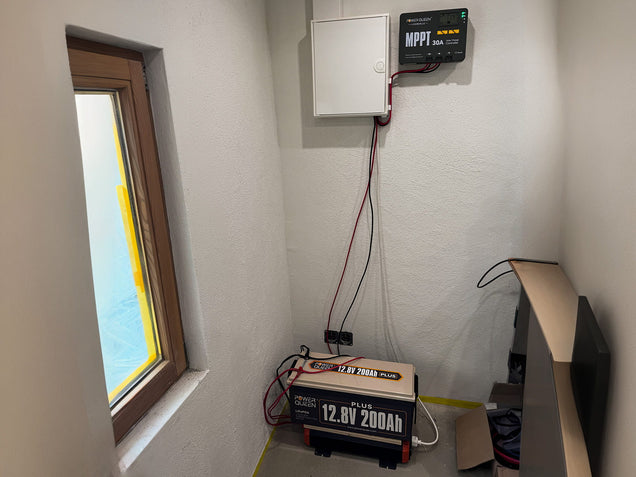Stop guessing which charger fits your battery. Power Queen Lithium battery and charger kits are engineered for full compatibility, matching voltage, connectors, and protection features. Whether you're powering an RV, boat, or solar setup, order now for a worry-free, all-in-one solution that works out of the box LiFePO4 battery.
11 products
-
-
Classic | ChargerPower Queen 12V 100Ah Group 24 LiFePO4 Battery + 14.6V 20A ChargerC$424.98 C$529.98
-
-
-
Bluetooth | ChargerPower Queen 12V 100Ah Group 24 Smart LiFePO4 Battery + 14.6V 20A ChargerC$424.98 C$589.98
-
-
-
Low-Temp | ChargerPower Queen 12V 280Ah Low-Temp LiFePO4 Battery + 14.6V 40A ChargerC$920.48 C$1,339.98
-
Bluetooth | Low-Temp | ChargerPower Queen 12V 100Ah Low-Temp Smart LiFePO4 Battery + 14.6V 20A ChargerC$454.98 C$529.98
-
Low-Temp | ChargerPower Queen 12V 100Ah Low-Temp LiFePO4 Battery + 14.6V 20A ChargerC$414.98 C$559.98
-
Why Choose Power Queen?
Lifespan Over 10 Years
Built to last over 4000 deep cycles—10x longer than lead-acid batteries. Use it for years, worry-free.
5-Year Warranty
Use it confidently on the road, at home, or off-grid—our 5-year warranty has your back.
EV-Grade Cells + Smart BMS
Made with EV-grade LiFePO4 cells and a smart battery management system for ultra-safe, consistent performance—at home or off-grid.
Eco-Friendly, 100% Recyclable
Free from hazardous materials and 100% recyclable—safer for your home, and better for the environment.
Save Money, Worry Less
No upkeep, no early failures—save more over time with a battery built for long-term value and peace of mind.


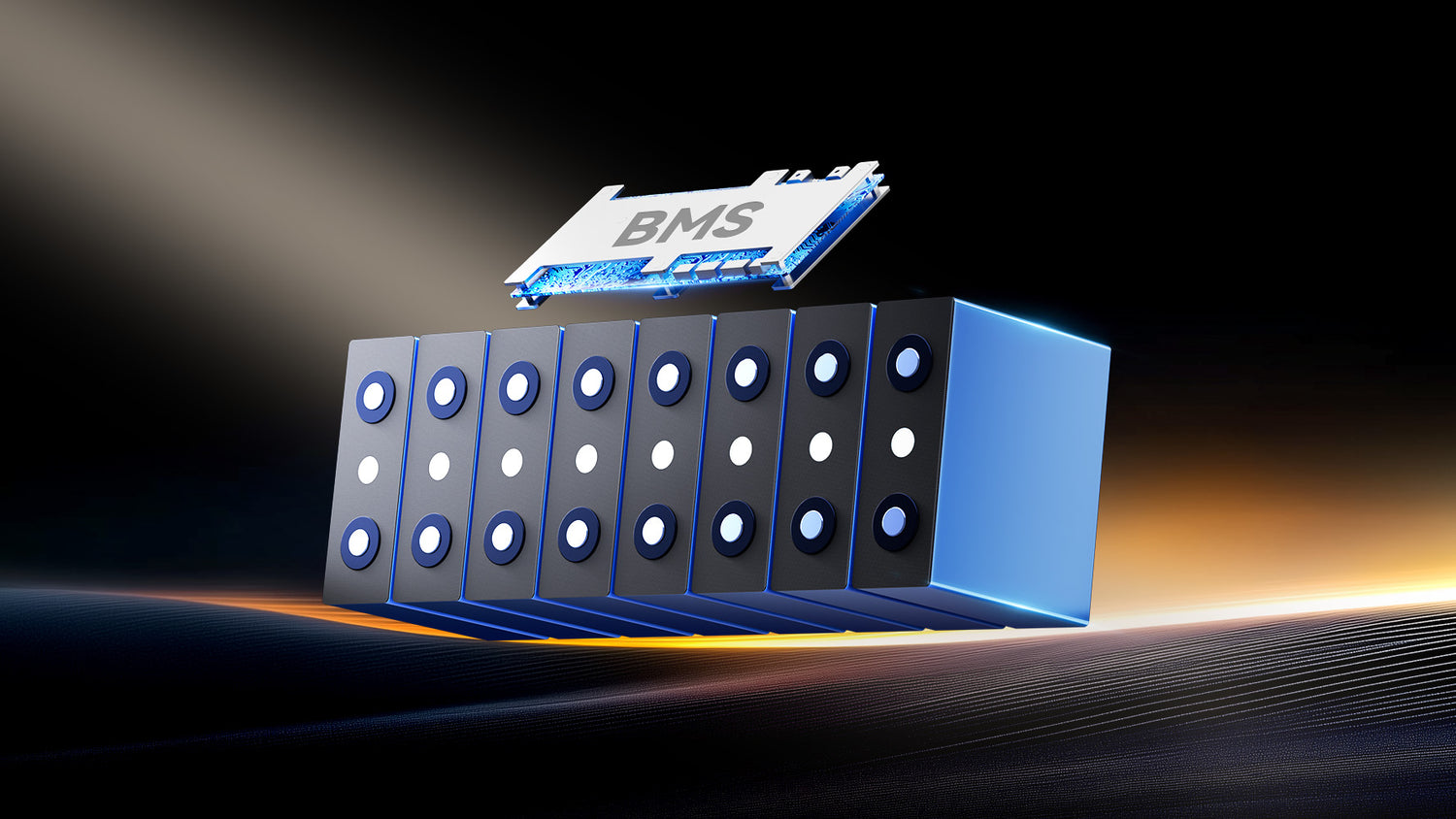


5000+real user reviews
30-Day Free Returns
5-Year Warranty
Fast & Free Shipping
Customer Testimonials
FAQ
Will the battery be fully charged when I receive it?
Due to the requirements of battery transportation, we will charge the battery to a 30%-50% charge level before we ship it to you. So the battery is not fully charged when received, we recommend fully charging it before starting to use.
Does Power Queen have Anderson Connector inbox?
Yes, the majority of Power Queen's chargers come equipped with Anderson connectors. For example, models like the Power Queen 14.6V 10A, 14.6V 20A, 14.6V 40A, and 29.2V 20A chargers include Anderson connectors along with M8 battery terminals, providing a convenient and secure connection.
If you are purchasing our LiFePO4 battery, it’s recommended to check the product manual or contact the seller to confirm whether the Anderson connector is included to ensure compatibility with your charger.
Can the battery be discharged while charging?
It's allowed to charge the battery while discharging, but simultaneous charging and discharging is not recommended, as it may affect the battery's lifespan.
Why it is recommended to store the batteries at a 50% charge level?
The reason why we recommend storing the battery at a 50% charge level is that the composition and performance of the battery are relatively stable at 50% charge, and a 50% battery charge level is relatively better for long-term storage compared with 100% fully charged.
The voltage dropped from 14.2V to 13.4V, why so fast? Is the battery damaged?
Based on the characteristics of Lithium Iron Phosphate (LiFePO4) batteries, the voltage measured by all LiFePO4 batteries during charging is not the real voltage of the battery. Therefore, after charging and disconnecting the battery from the power source, the voltage of the battery will gradually drop to its real voltage.
If you need to test the real voltage of the battery, please charge and disconnect the power supply and test its voltage after putting it aside for over 3 hrs. After you test it, please kindly let us know the value.
Can a 29.2V charger charge a 24V battery system with two 12V batteries in series?
Yes, if the charger is compatible with LifePO4 batteries, the 29.2V charger is suitable for charging a 24V battery system consisting of two 12V batteries connected in series.
Why does the battery shut down when I turn on the inverter, how fix it?
There is a capacitor in the input port of the inverter. When the inverter is switched on, the battery needs to charge the capacitor first if the capacitor is off power, and when the capacitor is fully charged the inverter can start with load normally.
The inrush current during the charging of the capacitor is very high and if the capacitor is not fully charged during one turn-on, the BMS will cut the circuit to protect the battery.
We recommend that you add a surge suppressors or resistors with a power of 10W to 50W and a resistance of 20Ω to 50Ω between the battery and the inverter, which can be connected for only 3-5 seconds to solve this problem.
Where are the terminal bolts?
Please remove the sticker from the foam sponge and the bolt can be found in the hole underneath the sticker.
Why does the manual recommend a busbar for parallel connections?
The manual recommends the use of busbars when connecting in parallell,It is because the busbar helps reduce the number of connections at the same battery terminal, minimizing contact resistance and maintaining better performance among all connected batteries, ensuring that each battery is charged and discharged at the same rate so that each battery draws the same current, resulting in more stable system operation.

